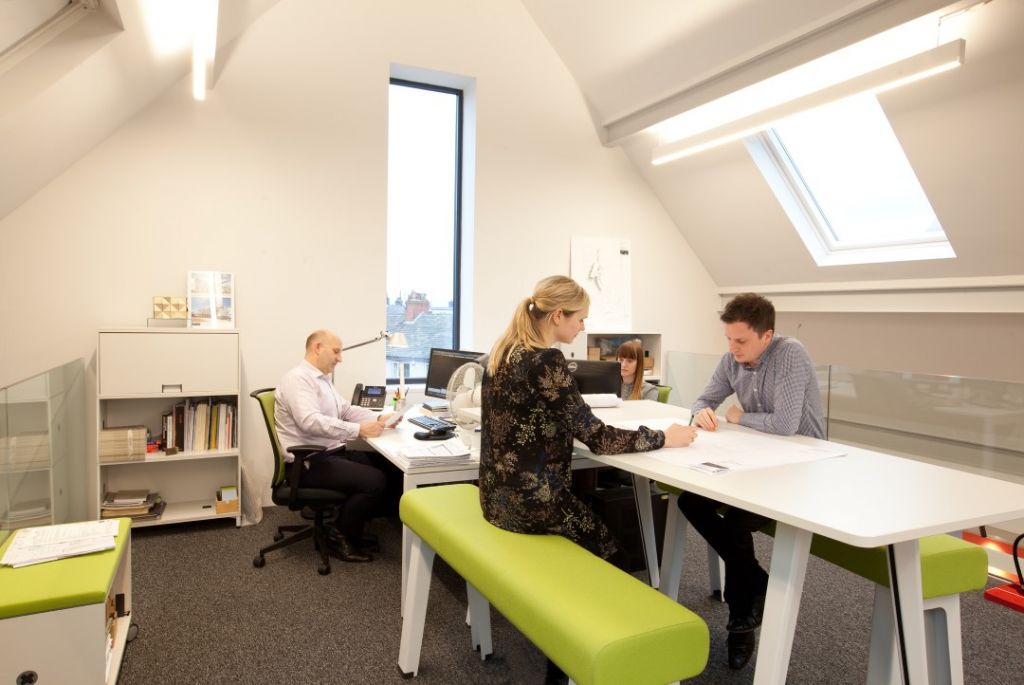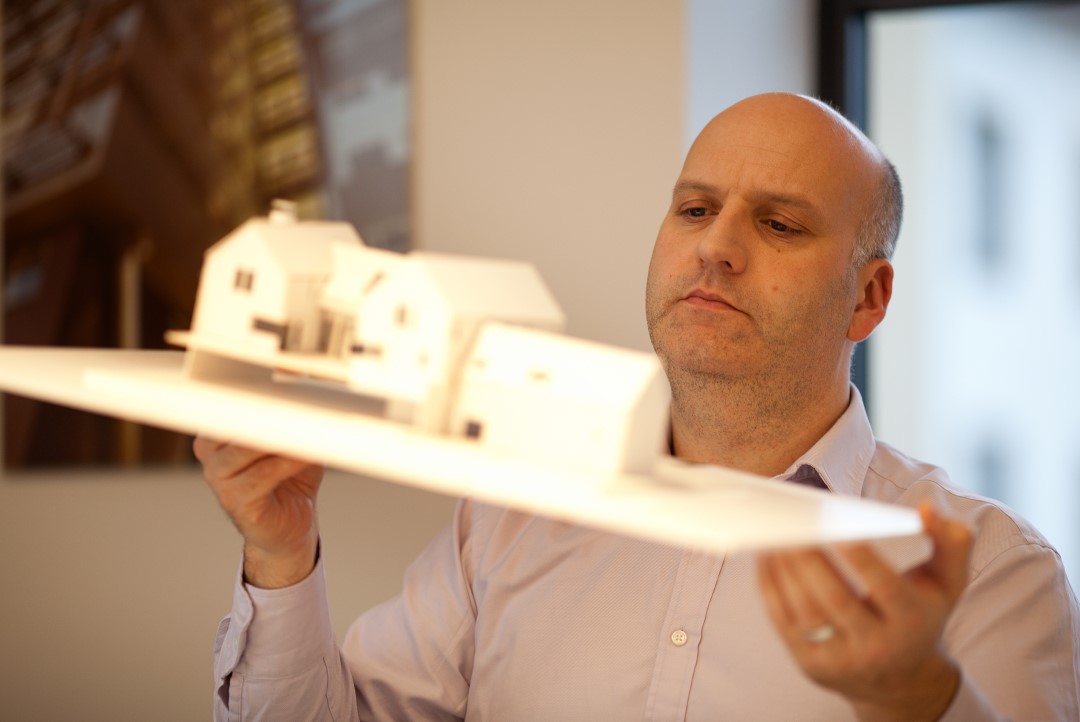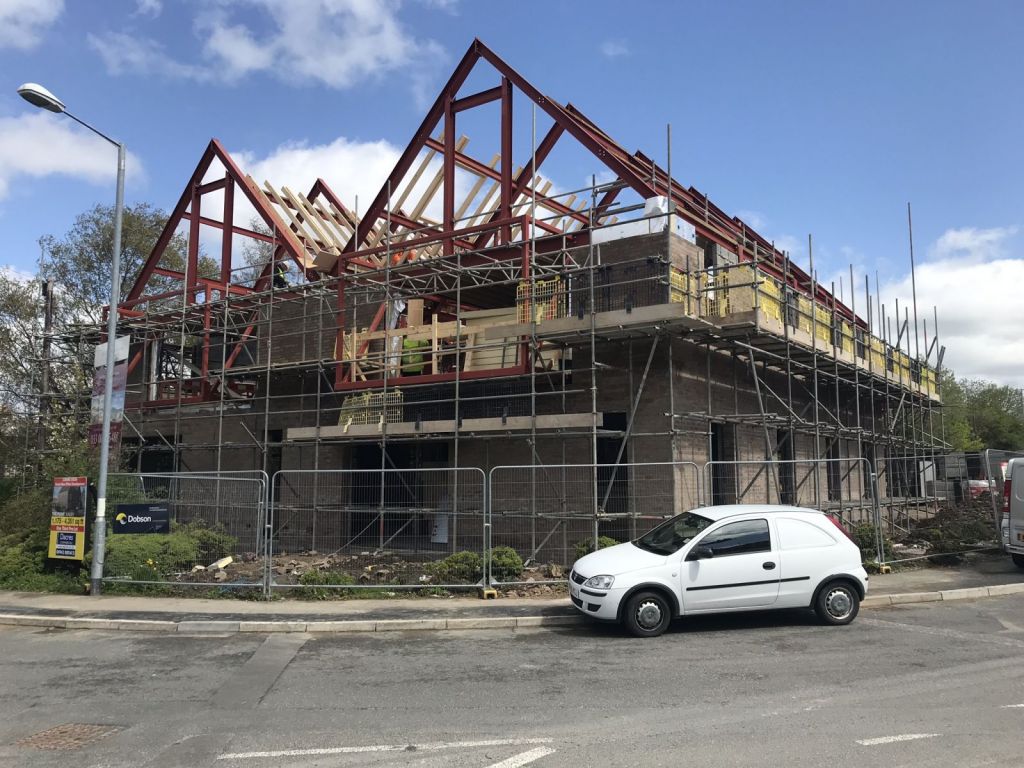Many people will be wanting to know some of the ways in which it is possible to become an architect here in the UK.
Those still at school will be looking to find the best route into a subject they have developed an awareness and interest for, whilst perhaps enjoying a variety of creative and academic subjects at GCSE and A Level.
Following successful completion of A Level education, the most commonly accepted route into architecture can be outlined in the following steps.
If you’ve been wondering how to become an architect in the UK, or what qualifications you need to be an architect, this post has it covered.

Step one – Undergraduate Degree
The first question that many people ask regarding a career in architecture is ‘What subjects do you need to be an architect?’
At a further education level, there are no essential subjects. However, you will benefit from studying something like Art or DT at A Level to give you more general skills that will be honed later on.
After that, you need to study an undergraduate degree from a Royal Institute of British Architects (RIBA) validated course. There are many validated courses available, both in the UK and internationally, which last between three and four years. This will provide you with the basic skills of drawing and CAD (computer-aided design) drawing, as well as theoretical, historical, material, and technical issues. Validated courses usually include the RIBA Part I examinations that all architects require.
Upon completing an undergraduate degree, you will have to gain practical experience before moving on to the next stage. This usually takes one year, and during this time students record their experience or Professional Experience Development Record (PEDR) on the PEDR website. This is monitored by both a Professional Studies Advisor (PSA) from the university you studied at, and an employment mentor from the placement you work for. Some people spend more than a year in these placements to get extra work experience, or save some money, before moving on to part two.
Further information about work placements can be found later in this text.

Step two – Postgraduate Degree
After at least a year’s work experience, you can go back to university to complete your postgraduate degree. This could be a BArch, a Diploma, or a March, but they will all last two years full-time. These courses are sometimes still classed as an undergraduate course, which can affect the cost of the course and funding available. Design modules are often taught in more specialist studios, whilst ‘crits,’ or critiques, involve you presenting your design work to your tutors for feedback. There are often also field trips to important or useful buildings. You can complete this degree at the same university you did your undergraduate course, or you can do it with a new provider. As postgraduate degrees in architecture are often more varied than undergraduate courses, it is worth considering aspects such as content and teaching methods when choosing the course. There may be work-based modules, where students can gain valuable practical experience, or there may be a chance to specialise in areas, including aspects such as sustainable architecture.
After completing the postgraduate course, you will be required to continue with some work experience. You should be under the direct supervision of a fully qualified architect, and you will now be given more responsibility on projects. For UK students, 12 months of work must take place in the EEA, Channel Islands, or the Isle of Man. As before, this will need to be recorded and monitored on the PEDR website for it to count.
Step three – The ADPPA
A total of at least 24 months’ work experience (i.e., 12 months before the postgraduate degree and 12 months afterwards) is required before moving onto part three: The final exam. In Britain, the RIBA has its own Part 3 qualification – the Advanced Diploma in Professional Practice in Architecture (ADPPA). This is an online course that assesses your competence as an architect before you can sign up for the exam itself. The exam lasts for three days. The first two days involve answering ‘practice problems,’ while the third day is for compiling your submission, which needs to include your CV, a Self-Evaluation, a Case Study, the PEDR log sheets from your work experience, and the answers to the Practice Problems. You will have to be overseen by your nominated supervisor, and there are fees for registration, completion of the online course and the examination.

What happens after the final exam?
Once the final exams are passed, this qualifies someone to register with a professional architecture organisation and the job title of ‘architect’ can be used.
What do you learn in an architecture degree?
Architecture degrees are a highly popular and competitive choice. Studying it at university requires a particular set of skills combining both sides of the brain; creative and logical. Courses draw on elements of mathematics and engineering, alongside creativity and an understanding of modern technologies and cultural trends.
The approach differs between universities, and you should research the various modules, the possibility of a sandwich year and attend open days. A lot of architecture is taught not in the classroom, but by actually going out and seeing it in the real world, so features such as field trips and a year abroad are appealing additions to the curriculum.

Key parts of BA or BSc programmes (bachelor’s degrees) include structural engineering, architectural history, principles of environmental design and building material studies. Degrees teach budding architects everything from how to accurately draw 3D designs – both by hand and computer – to design theory.
Some academic institutions concentrate on giving its students a detailed understanding of the history of architecture while others immediately concentrate on the practicalities of the industry. Modern universities focus on management and building skills that prepare their students for running building sites.
An integral part of an architecture degree is the development of practical design skills, meaning that a large proportion of time is spent doing studio-based design project. Drawing skills are developed as well as digital illustration and architectural modelling.
Becoming an ‘Architect’
Having gained the Parts 1, 2 and 3 qualifications you can apply to register as an architect with the Architects Registration Board (ARB); the title ‘architect’ is protected by law, so that the public can always be sure that they are dealing with a properly qualified architect.
At this point you are eligible to become a Chartered Member of the RIBA. This gives you access to a wide range of services and benefits, and entitles you to become part of, and have influence over, a national and international network of architects.

Work Placements.
As part of both RIBA Parts 1 and 2 and before the Part 3 final exam, it is essential that the student undertakes a minimum of 24 months total work placement in practice.
This is usually split as a 12-month placement after completion of the Part 1 degree, then another 12 months after the Part 2 postgraduate degree.
Halliday Clark Architects have accommodated numerous work placement candidates over the years, many of whom have continued their career development with us following their successful completion of the RIBA Part 3 examination. Halliday Clark have always been able to offer placements which fulfil a broad range of RIBA criteria within an interesting and comprehensive range of sectors and building types.

Of course, before committing to many years of university study many young students are able to spend a week with us to see some of the things that happen in the studio of a busy architectural practice.
Many hundreds of these work experience students have spent time in our office, where we are able to provide them with invaluable insights into the day-to-day life or an architect, whilst developing a variety of creative skills with a week-long mock project set to challenge the student to think about things in a slightly different way than they might be used to at school.
Interested students with an interest in how to be an architect should contact our office for further details.
International Students
If you have studied or qualified to be an architect outside the UK, including RIBA validated qualifications completed outside the UK or EU, your qualification(s) will need to be assessed for equivalence to the UK Parts 1 and 2 by the Architects Registration Board (ARB) and you will also need to undertake a UK Part 3 to be eligible to apply for UK architect registration.
